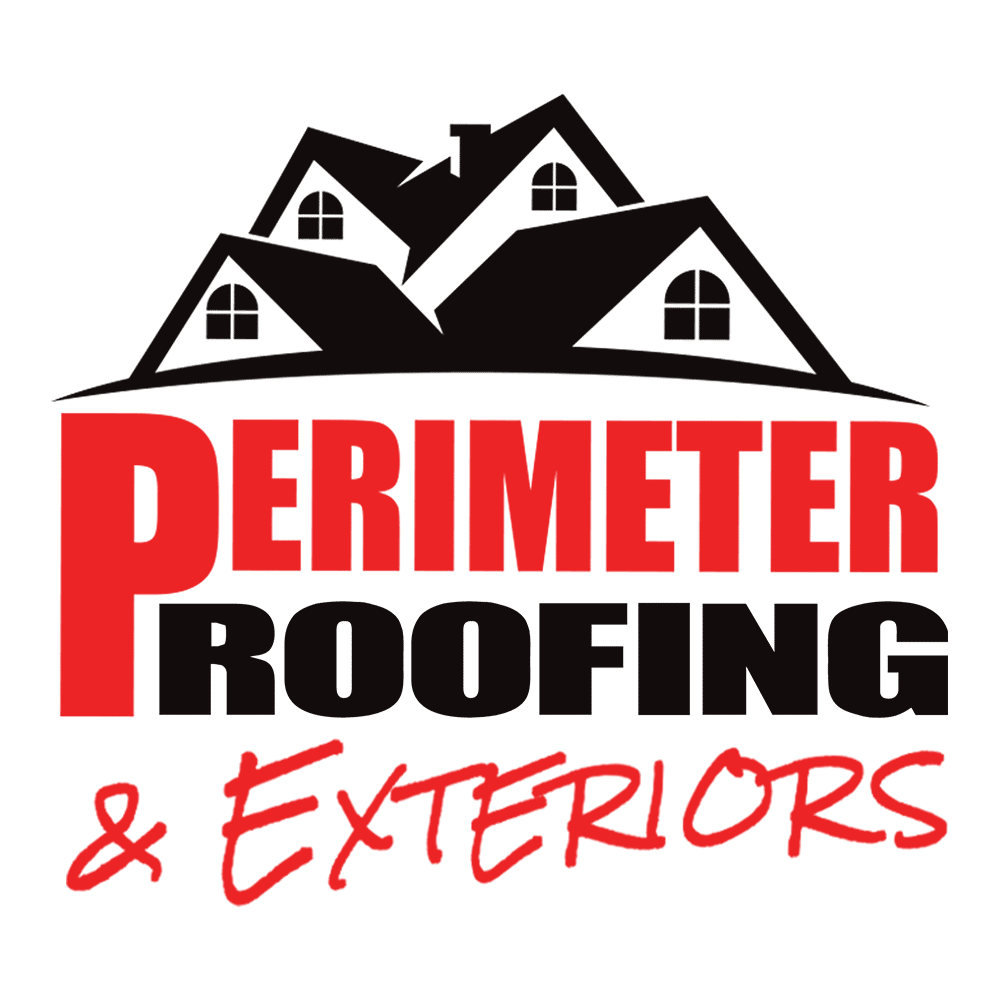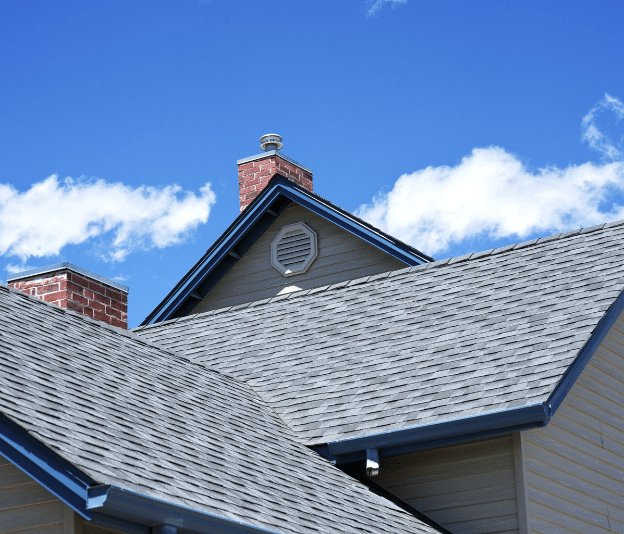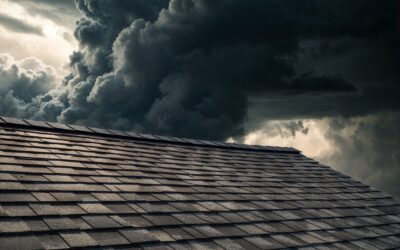Roof maintenance is an often overlooked aspect of home safety that demands attention. A well-maintained roof serves as the first line of defense against the elements, protecting both the structural integrity of a house and its inhabitants. Neglecting regular roof maintenance can lead to a cascade of problems that not only compromise the safety of your home but also result in costly repairs and potential health hazards.
Brief explanation of the importance of roof maintenance
The importance of roof maintenance cannot be overstated. The roof is not merely a decorative element or a shield from rain; it is an integral part of a home’s structural framework. Regular upkeep ensures that any minor issues are identified and addressed promptly, preventing them from escalating into major problems.
By investing time and effort into maintaining your roof, you are safeguarding your most valuable asset, your home. Roofs endure harsh weather conditions such as heavy rain, snowfall, scorching heat, and powerful winds throughout their lifespan.
Over time, these weather elements take their toll on roofs by causing wear and tear to its various components. Without regular inspection and maintenance, these small damages can escalate into more extensive issues that compromise the stability and safety of your entire dwelling.
Overview of the potential risks and dangers of neglecting roof maintenance
Neglecting regular roof maintenance comes with significant risks and dangers that should not be underestimated. One common consequence is leakages caused by damaged or missing shingles or cracks in the roofing material. These leaks may seem minor at first but can lead to severe water damage inside your home if left unaddressed.
In addition to water damage, neglected roofs are susceptible to structural weakening due to rotting wood caused by moisture accumulation. This compromises the overall stability of your house’s framework and increases the risk of collapse, especially during extreme weather events.
Furthermore, neglected roofs become breeding grounds for mold and mildew, which can pose serious health risks to the occupants of the house. The presence of mold spores in the air can lead to respiratory problems and allergies, particularly in individuals with pre-existing conditions.
An unmaintained roof may not fulfill its intended purpose of energy efficiency. Cracked or poorly insulated roofs allow heat to escape during winter months and permit excessive heat entry during summer, resulting in higher energy bills as your heating and cooling systems work overtime.
Understanding the Structure and Function of a Roof
Exploration of Different Components
A typical roof consists of several essential components that work harmoniously to provide shelter, insulation, and protection for a home. These components include the roof deck, underlayment, flashing, shingles or other roofing material, gutters, ridge vents, and soffits.
Let’s delve into each of these elements in detail. The roof deck serves as the foundation on which the rest of the roofing system is built.
It is typically made of plywood or oriented strand board (OSB) and provides structural support for the other components. The underlayment is a waterproof layer that lies directly on top of the roof deck.
It acts as an additional barrier against moisture infiltration and helps prevent leaks. Flashing refers to metal strips or sheets installed at vulnerable areas such as chimney junctions, vents, skylights, and valleys.
Its purpose is to redirect water away from these critical spots where leaks are prone to occur. Shingles or other roofing materials form the outermost layer visible from outside and serve as a protective shield against weather elements.
Gutters play a crucial role in channeling rainwater away from the roof’s surface and directing it safely down to drainage systems or rain barrels. Ridge vents help facilitate proper ventilation by allowing hot air to escape from the attic space while drawing in fresh air through intake vents located at soffits.
Contribution to Safety and Stability
Each component within a roof system plays an integral role in ensuring overall safety and stability for a home. The roof deck acts as a sturdy foundation upon which all other elements rely on for support—improper maintenance or damage to this component can compromise its structural integrity, leading to potential collapse risks during extreme weather events like heavy snowfall or strong winds.
The underlayment safeguards against water intrusion, preventing moisture from seeping into the home’s interior and causing extensive damage to walls, ceilings, and electrical systems. Flashing ensures that vulnerable areas prone to leaks remain watertight, reducing the risk of water damage and subsequent mold growth.
The outermost layer of shingles or roofing material acts as a barrier against UV rays, rain, hailstorms, and wind-driven debris. By withstanding these elements effectively, it protects the home from exterior threats.
Gutters help prevent water accumulation on the roof’s surface while directing it away from the foundation. This prevents potential flooding or water damage to basement walls and mitigates erosion risks around the property.
Ridge vents and soffits promote proper attic ventilation by allowing hot air to escape and fresh air to circulate. Adequate ventilation helps regulate temperature extremes within the attic space, preventing moisture buildup that can lead to mold growth or structural damage.
Understanding how each component contributes to safety and stability underscores the importance of regular roof maintenance. By ensuring that all elements are in good condition through inspections and repairs when necessary, homeowners can safeguard their homes against potential risks while prolonging their roof’s lifespan.
The Effects of Weather on Roofs
Detailed analysis of how various weather conditions can impact roofs (e.g., rain, snow, wind, heat)
Weather conditions have a significant impact on the overall health and structural integrity of roofs. Rain, for instance, is a common weather element that can cause substantial damage to roofs over time. When rainwater seeps through cracks or damaged areas in the roofing system, it can lead to moisture infiltration within the underlying structure.
This moisture creates a conducive environment for the growth of mold and mildew, which not only weakens the roof but also poses health risks to occupants. Additionally, persistent rainfall can cause water pooling on flat or low-sloped roofs, putting extra strain on the structure and increasing the potential for leaks.
Snow is another weather condition that poses challenges to roof maintenance. As snow accumulates on rooftops, it adds significant weight and stress to the supporting structures.
Excessive snow accumulation without proper removal techniques can lead to roof collapse or structural damage. In regions with frequent snowfall, homeowners should consider investing in adequate insulation and ventilation systems to prevent ice damming—an issue that arises when melting snow refreezes at roof edges—leading to potential leaks and water damage.
Strong winds also pose a threat to roofs by exerting forceful pressure against their surfaces. During severe storms or hurricanes, gusts of wind can tear off shingles or even lift entire sections of roofing material from their positions.
This exposes vulnerable areas beneath and compromises the overall integrity of the roof system. Additionally, flying debris carried by high-speed winds may impact rooftops causing punctures or tears that allow water infiltration.
Extreme heat levels are not only uncomfortable for humans but also detrimental to roofs as they accelerate deterioration processes. Intense heat causes roofing materials such as asphalt shingles or tiles to expand and contract repeatedly over time—leading to cracks, warping, and overall weakening of the roof’s protective layers.
Prolonged exposure to high temperatures can also cause the degradation of roofing materials due to ultraviolet (UV) radiation. This UV degradation can result in discoloration, loss of structural integrity, and reduced lifespan of the roof.
Elaboration on how prolonged exposure to harsh weather elements can lead to structural damage and compromise safety
Prolonged exposure to harsh weather elements can have catastrophic consequences for roofs and ultimately jeopardize the safety of occupants. Structural damage often begins gradually with small issues that worsen over time due to repeated exposure to adverse weather conditions. For instance, if water infiltrates through compromised areas in the roof during rainfall or snowmelt, it can saturate insulation materials and weaken wooden structures.
Over time, this moisture weakens the supporting beams and rafters that hold up the roof, leading to sagging or even collapse. Furthermore, when water enters a building through a damaged roof, it not only compromises structural integrity but also increases the risk of electrical hazards.
Moisture infiltration into electrical systems may lead to short circuits or fires, posing significant safety hazards for residents. Additionally, prolonged water exposure from leaks caused by weather conditions promotes mold growth within walls and ceilings—raising concerns about indoor air quality and potential health risks associated with mold spores.
The impact of severe winds on roofs should not be underestimated either. Roof materials ripped off by strong winds leave sections exposed to rainwater penetration or further wind damage.
The resulting leaks may go unnoticed at first but gradually deteriorate interior structures such as drywall or ceiling tiles over time—leading to expensive repairs or replacements down the line. Neglecting regular maintenance while exposing your roof continuously to various challenging weather conditions puts your home’s safety at risk.
Rainwater infiltration from damaged roofs can cause structural decay and pose health risks due to mold growth. Snow accumulation and strong winds can lead to significant damage and even roof collapse.
Moreover, prolonged exposure to extreme heat can accelerate the deterioration of roofing materials, reducing their lifespan. Therefore, it is imperative to understand the effects of weather on roofs and take appropriate measures to protect and maintain this crucial component of your home’s safety.
Identifying Common Roof Problems
Roofs, being exposed to the elements day in and day out, are prone to various issues that can compromise their integrity over time. It is essential for homeowners to be aware of these common problems in order to catch them early and prevent further damage. One of the most prevalent issues faced by roofs is leaks.
Leaks can occur due to a variety of reasons, such as damaged flashing around chimneys or vents, cracked shingles, or clogged gutters causing water backup. If left unaddressed, leaks can lead to extensive water damage inside the house, including mold growth and structural deterioration.
Another common problem is missing shingles. Shingles serve as a protective layer against weather elements and help keep moisture out.
When shingles become loose or go missing altogether, it exposes the underlying roof structure to potential damage. This can result in water penetration during rainfall or snowmelt, leading to further issues like rotting wood or weakened framework.
Sagging is yet another issue that homeowners should be vigilant about. A sagging roof signifies structural problems within the foundation or support system of the roof.
This could be caused by inadequate construction practices, excessive weight accumulation (e.g., from heavy snowfall), or termite infestations that weaken the wooden components supporting the roof’s weight. Ignoring a sagging roof can have severe consequences like collapsed sections or compromised stability of the entire structure.
The Importance of Regular Inspections
Regular inspections of your roof are paramount when it comes to ensuring the safety and longevity of your home. By conducting routine inspections, homeowners can detect early signs of damage or deterioration before they escalate into major issues. This proactive approach allows for timely repairs, preventing further damage and potentially saving significant costs down the line.
One crucial reason why routine inspections are essential is their ability to identify hidden issues that homeowners might overlook. Often, the untrained eye may not notice subtle signs of roof problems, such as small leaks or weakened areas.
However, professional inspectors possess the expertise and experience to spot these hidden issues easily. They know where to look for potential problem areas and use specialized tools to thoroughly assess the condition of the roof.
Their trained eyes can detect even minor indications of damage that might go unnoticed by homeowners. Professional inspections also bring peace of mind, as they provide a comprehensive evaluation backed by their knowledge and expertise in roofing systems.
Their keen attention to detail ensures no stone is left unturned during the inspection process. With their thorough examination, professional inspectors can uncover underlying problems that could pose serious risks if left unaddressed.
By investing in regular inspections conducted by professionals, homeowners can stay ahead in maintaining their roofs’ safety and functionality. It acts as a preventive measure against future costly repairs while offering invaluable peace of mind knowing that any potential issues have been identified early on.
Preventive Measures for Roof Maintenance
Recommendations for homeowners to maintain their roofs regularly
Regular maintenance of your roof is crucial to ensure its longevity and the safety of your home. A few simple recommendations can go a long way in preserving the integrity of your roof.
Firstly, it is essential to clean your gutters at least twice a year, preferably in spring and fall. Clogged gutters can cause water to overflow, leading to water damage on the roof and potentially inside the house.
Additionally, regularly inspecting and trimming overhanging branches around your roof will prevent them from rubbing against or falling onto your roof during storms or high winds. These measures help minimize potential risks and ensure that water flows freely away from your home.
Tips for DIY repairs and maintenance tasks
While some maintenance tasks require professional expertise, there are certain repairs and maintenance tasks that homeowners can safely undertake themselves. However, caution must always be exercised when working at heights or dealing with potentially hazardous materials.
For minor repairs like replacing damaged shingles, homeowners can use common tools such as a hammer, pry bar, and roofing nails following proper safety guidelines provided by manufacturers. Moreover, periodic inspections should include checking for loose or missing shingles, cracked caulk around pipes or vents, or damaged flashing that may need immediate attention.
By incorporating these preventive measures into regular roof maintenance routines at appropriate intervals throughout the year, homeowners can significantly reduce potential risks associated with neglected roofs while simultaneously prolonging the life of their roofs. Remember that safety should always be prioritized when performing any DIY repairs on roofs; if unsure about any task’s complexity or safety implications, it is advisable to consult professional roofers instead of taking unnecessary risks that could worsen the situation further.
The Role of Professional Roofers in Maintenance
Explanation on when it is necessary to hire professional roofers for maintenance tasks
When it comes to ensuring the longevity and safety of your roof, there are instances where hiring professional roofers becomes essential. While some minor repairs and maintenance tasks can be handled by homeowners themselves, certain situations demand the expertise of trained professionals. For example, if you notice extensive damage to your roof or suspect structural issues such as sagging or unevenness, it is crucial to call in professionals.
Likewise, if you lack experience or specific knowledge about roofing systems, attempting complex repairs can lead to further damage and compromise the safety of your home. Professional roofers possess the necessary skills, tools, and experience to identify underlying problems accurately and provide effective solutions.
Discussion on the benefits and expertise that professionals bring in ensuring proper upkeep
The benefits of hiring professional roofers for regular maintenance tasks extend beyond immediate repairs. These experts bring a wealth of knowledge and experience that ensures your roof receives thorough care.
One notable advantage is their ability to conduct a comprehensive inspection of your entire roofing system, including hard-to-reach areas such as flashing installations or chimney connections. By identifying potential issues early on, they can prevent minor problems from escalating into costly disasters down the line.
Moreover, professional roofers have access to high-quality materials specifically designed for roofing applications and possess the skills necessary for their installation. This ensures that any repairs or replacements done contribute to enhancing the overall durability and safety of your home’s structure.
In addition to their technical expertise, professional roofers also offer valuable advice on preventive measures homeowners can take to maintain their roofs properly. They can guide you on seasonal maintenance routines tailored specifically for your region’s climate conditions, recommend suitable cleaning methods without causing damage, and provide insights into products that might help prolong your roof’s lifespan.
Overall, hiring professional roofers for roof maintenance tasks is a wise investment that guarantees the safety and longevity of your home. Their expertise, attention to detail, and access to quality materials make them crucial partners in the upkeep of your roof, ensuring that it remains a reliable shield against the elements for years to come.
The Long-Term Cost Savings through Regular Maintenance
Exploring the Financial Benefits of Regular Roof Maintenance
Regular roof maintenance is an investment that yields substantial cost savings over time. While some homeowners may be reluctant to spend money on preventative measures, it is important to recognize the potential long-term consequences of neglecting roof maintenance. By addressing minor issues promptly, you can prevent them from escalating into major problems that require expensive repairs or even a full roof replacement.
One significant cost-saving aspect of regular maintenance lies in early detection and prevention. By conducting routine inspections, you can identify small leaks, damaged shingles, or compromised flashing before they worsen and cause extensive damage to your home’s interior.
Quick repairs or replacements during the early stages are significantly more affordable than waiting until further deterioration occurs. In addition to preventing costly repairs, regular maintenance also extends the lifespan of your roof.
By addressing wear and tear proactively, you can ensure that your roof remains structurally sound for its intended lifespan. This reduces the likelihood of premature replacement costs and provides you with a solid return on your initial roofing investment.
The Environmental Benefits of Sustainable Roof Maintenance
Another advantage worth mentioning pertains to sustainable roofing practices. Implementing eco-friendly measures during routine maintenance not only contributes to environmental conservation but also offers long-term financial benefits by reducing energy consumption. For instance, ensuring proper insulation and sealing gaps helps maintain consistent indoor temperatures throughout different seasons.
This results in reduced reliance on heating and cooling systems, which translates into lower energy bills year-round. Moreover, incorporating sustainable materials during repairs or replacements can also contribute to overall energy efficiency.
Installing reflective coatings or utilizing recycled materials minimizes heat absorption from sunlight, lowering cooling needs during hot periods. By embracing eco-conscious practices as part of regular roof maintenance routines, homeowners can make a positive impact on both their wallet and the environment in the long run.
Conclusion
Regular roof maintenance is not merely an optional chore but an essential practice that safeguards the safety and financial well-being of your home. By understanding the structure and function of your roof, being aware of common problems, and conducting routine inspections, you can identify issues early on and address them promptly. The long-term cost savings derived from preventive measures far outweigh the potential expenses associated with neglecting maintenance.
Additionally, by embracing sustainable roofing practices, homeowners can contribute to a greener future while enjoying reduced energy bills. So, let us all commit to regular roof maintenance and ensure our homes stay safe and secure for years to come.



